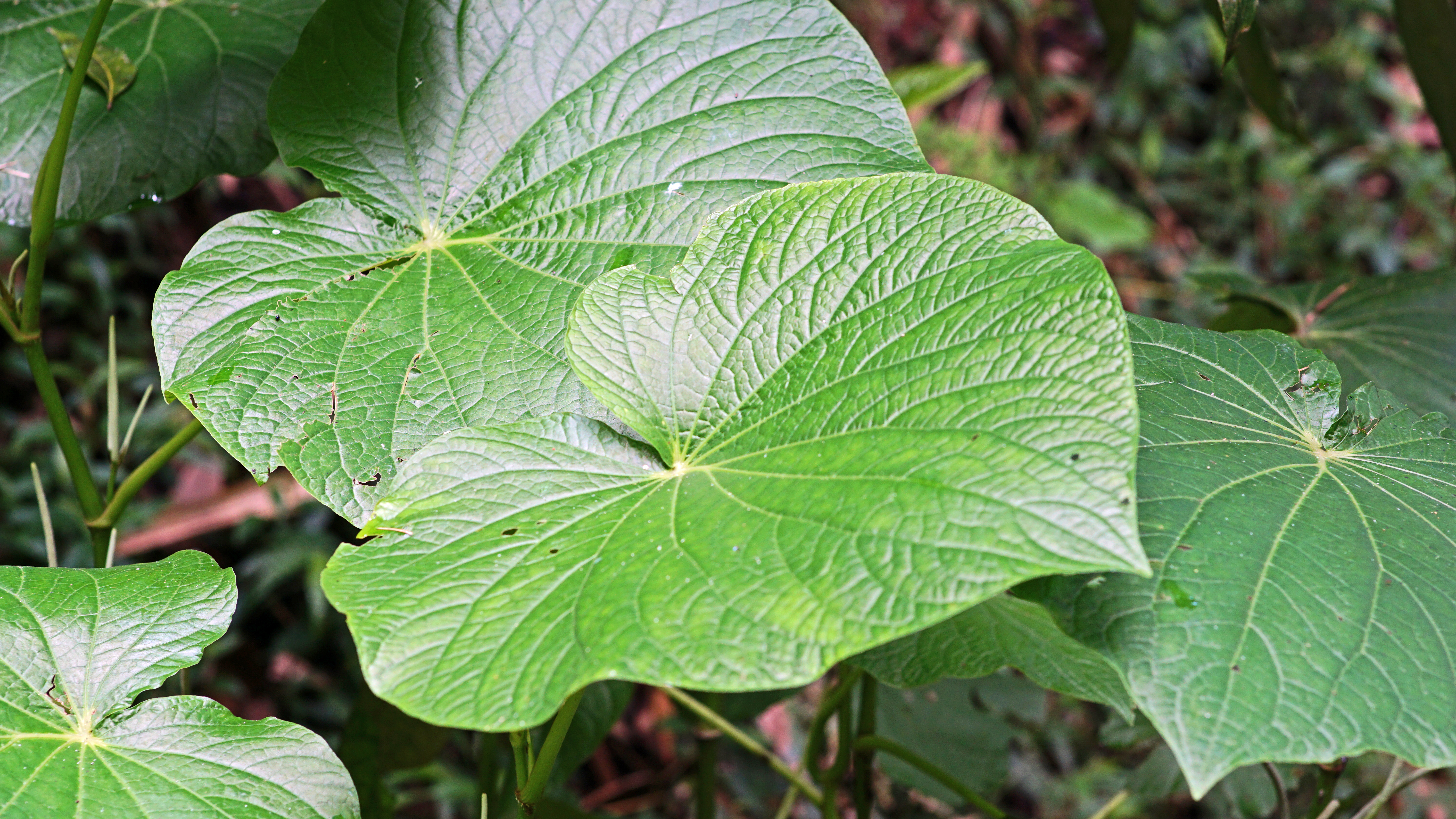Wild pepper
(Piper umbellatum)

Description
Pothomorphe umbellatum, or pariparoba, is a plant of Brazilian origin (atlantic wood) that has been traditionally used in folk remedies for digestive and liver-related maladies. In 2002, a research group based at the Tokyo Medical and Dental University discovered antibacterial properties of the plant specific to Helicobacter pylori. Two years later in laboratory testing at the Pharmaceutical Sciences College (FCF) of the University of São Paulo, molecules found within the plant were demonstrated to have UVB-protective properties. For its medicinal and cosmetic promise, the Brazilian pharmaceutical company Natura obtained exclusive marketing rights to products developed from the plant. Piper, the pepper plants or pepper vines, is an economically and ecologically important genus in the family Piperaceae. It contains about 1,000-2,000 species of shrubs, herbs, and lianas, many of which are dominant species in their native habitat. The diversification of this taxon is of interest to understanding the evolution of plants. Pepper plants belong to the magnoliids, which are angiosperms but neither monocots nor eudicots. Their family, Piperaceae, is most closely related to the lizardtail family (Saururaceae), which in fact generally look like smaller, more delicate and amphibious pepper plants. Both families have characteristic tail-shaped inflorescences covered in tiny flowers. A somewhat less close relative is the pipevine family (Aristolochiaceae). A well-known and very close relative – being also part of the Piperaceae – are the radiator plants of the genus Peperomia. The scientific name Piper and the common name "pepper" are derived from the Sanskrit term pippali, denoting the long pepper (P. longum). Piper species have a pantropical distribution, and are most commonly found in the understory of lowland tropical forests, but can also occur in clearings and in higher elevation life zones such as cloud forests; one species – the Japanese Pepper (P. kadsura) from southern Japan and southernmost Korea – is subtropical and can tolerate light winter frost. Peppers are often dominant species where they are found. Many pepper plants make good ornamentals for gardens in subtropical or warmer regions. Pepper vines can be used much as ivy in temperate climates, while other species, like lacquered pepper (P. magnificum) grow as sizeable, compact and attractive shrubs with tough and shiny leaves.
Taxonomic tree:







